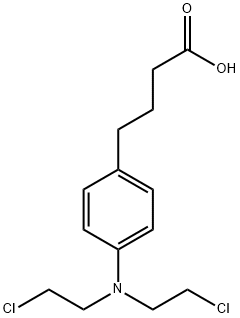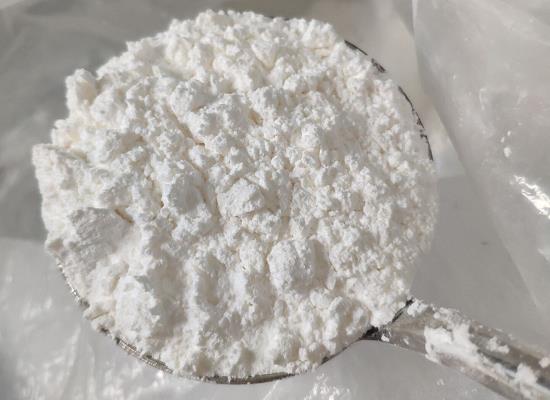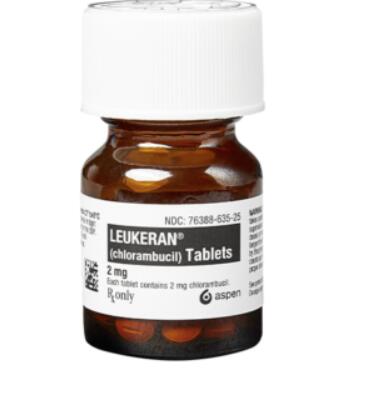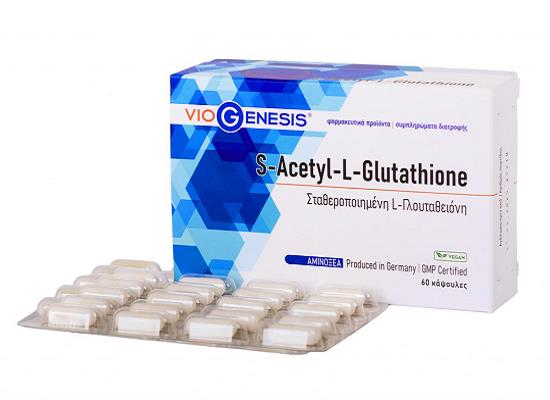Chlorambucil: mechanism of action, clinical applications and hepatotoxicity
General Description
Chlorambucil is an alkylating agent commonly used in the treatment of various types of cancer. It works by forming covalent bonds with DNA strands, disrupting their structure and preventing proper replication and transcription. This leads to DNA damage and apoptosis in cancer cells. By targeting rapidly dividing cells, Chlorambucil specifically inhibits the growth and spread of cancer cells, resulting in tumor regression. It is primarily used in the treatment of chronic lymphocytic leukemia (CLL) but has also shown efficacy in other types of leukemia and lymphoma. Chlorambucil is typically administered orally and can be combined with other chemotherapy drugs or radiation therapy for enhanced effectiveness. It may rarely cause liver injury and hypersensitivity reactions. Overall, Chlorambucil is a valuable chemotherapy drug for various cancers.
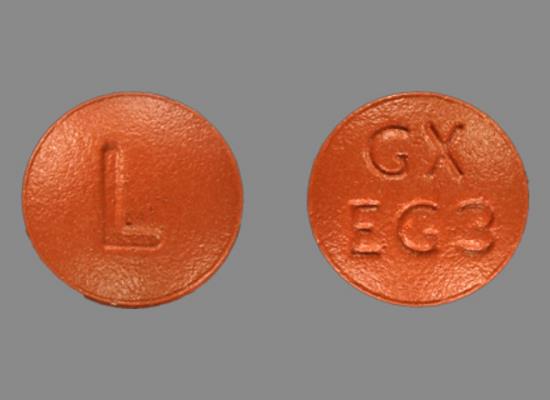
Figure 1. Tablets of chlorambucil
Mechanism of action
Chlorambucil is an alkylating agent commonly used in the treatment of various types of cancers. It exerts its therapeutic effect by interfering with the DNA replication process and inhibiting the growth of cancer cells. The primary mechanism of action of Chlorambucil involves its ability to form covalent bonds with DNA strands, resulting in cross-linking between double helices. This cross-linking disrupts the normal DNA structure and prevents proper DNA replication and transcription. It also induces DNA strand breaks and triggers apoptosis, a programmed cell death process, in cancer cells. Through its alkylating properties, Chlorambucil targets rapidly dividing cells, including cancer cells, because they have a higher rate of DNA replication compared to normal cells. By specifically targeting cancer cells, Chlorambucil helps to inhibit their growth and spread, ultimately leading to tumor regression. In summary, Chlorambucil functions as an alkylating agent to disrupt DNA replication, induce DNA damage, and promote apoptosis in cancer cells. Its unique mechanism of action makes it an effective treatment option for certain types of cancers. 1
Clinical applications
Chlorambucil is a chemotherapy drug that has been used for several decades to treat various types of cancer, such as leukemia, lymphoma, and multiple myeloma. It belongs to the family of nitrogen mustard alkylating agents, which work by attaching an alkyl group to the DNA molecule in cancer cells, thereby interfering with their ability to divide and multiply. In clinical practice, Chlorambucil is typically administered orally in the form of tablets or capsules. The dosage and duration of treatment depend on the type and stage of cancer, as well as the patient's overall health status. The drug is often used in combination with other chemotherapy drugs or radiation therapy to increase its effectiveness and minimize side effects. Chlorambucil has shown promising results in treating chronic lymphocytic leukemia (CLL), a type of cancer that affects lymphocytes, a type of white blood cell. Patients with CLL who receive Chlorambucil often experience a reduction in tumor size, an improvement in blood cell counts, and an overall improvement in quality of life. The drug has also been used to treat other types of leukemia, such as acute lymphoblastic leukemia (ALL) and hairy cell leukemia. In conclusion, Chlorambucil is a valuable chemotherapy drug that has been widely used in the treatment of various types of cancer. 2
Hepatotoxicity
Chlorambucil therapy is associated with a low rate of serum enzyme elevations, but these are generally mild and self limited, not requiring dose adjustment. Rare instances of clinically apparent acute liver injury attributed to chlorambucil have been reported. The onset of symptoms was within 2 to 6 weeks of starting chlorambucil and the typical enzyme pattern was cholestatic. Some cases have had features of hypersensitivity (rash, fever), and liver injury has recurred upon rechallenge. This form of liver injury is rare and resembles the idiosyncratic acute liver injury due to cyclophosphamide. Chlorambucil has not been linked specifically to sinusoidal obstruction syndrome, but it is not used in high doses in neoplastic disease or in conditioning regimens for hematopoietic cell transplantation, situations in which alkylating agents are commonly associated with this complication. Chlorambucil therapy has also been linked to hypersensitivity reactions and severe cutaneous adverse events such as Stevens Johnson syndrome and toxic epidermal necrolysis, both of which can be accompanied by serum enzyme elevations and hepatitis. 3
Reference
1. Sang L, Li J, Zhang F, Jia J, Zhang J, Ding P, Sun T, Wang D. Glycyrrhetinic acid modified chlorambucil prodrug for hepatocellular carcinoma treatment based on DNA replication and tumor microenvironment. Colloids Surf B Biointerfaces. 2022 Dec;220:112864.
2. Drugs and Lactation Database (LactMed?) [Internet]. Bethesda (MD): National Institute of Child Health and Human Development; 2006–. Chlorambucil. 2023 Aug 15.
3. LiverTox: Clinical and Research Information on Drug-Induced Liver Injury [Internet]. Bethesda (MD): National Institute of Diabetes and Digestive and Kidney Diseases; 2012–. Chlorambucil. 2017 Oct 5.
);You may like
Related articles And Qustion
See also
Lastest Price from Chlorambucil manufacturers

US $0.00/g/Bag2023-11-15
- CAS:
- 305-03-3
- Min. Order:
- 10g
- Purity:
- 99%min; USP
- Supply Ability:
- 60kg/month

US $75.00/KG2023-04-23
- CAS:
- 305-03-3
- Min. Order:
- 1KG
- Purity:
- 99%
- Supply Ability:
- 9000kg/per week
